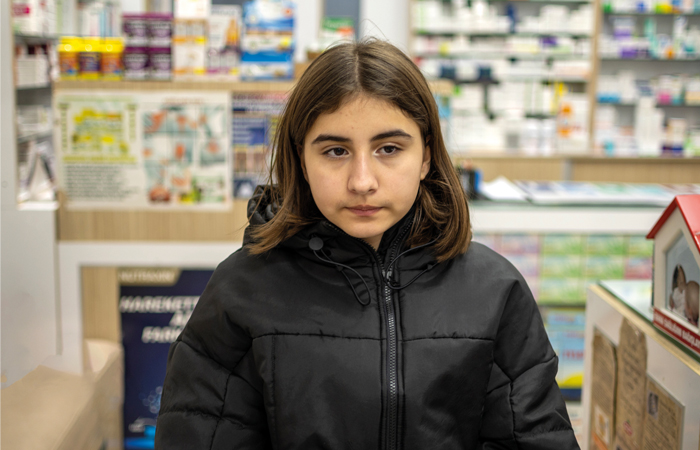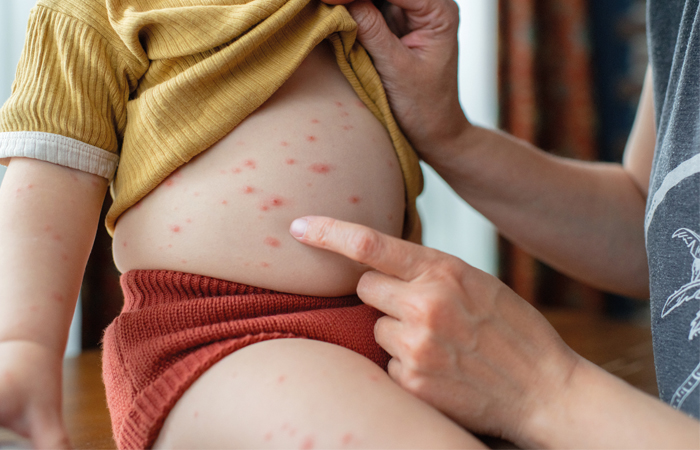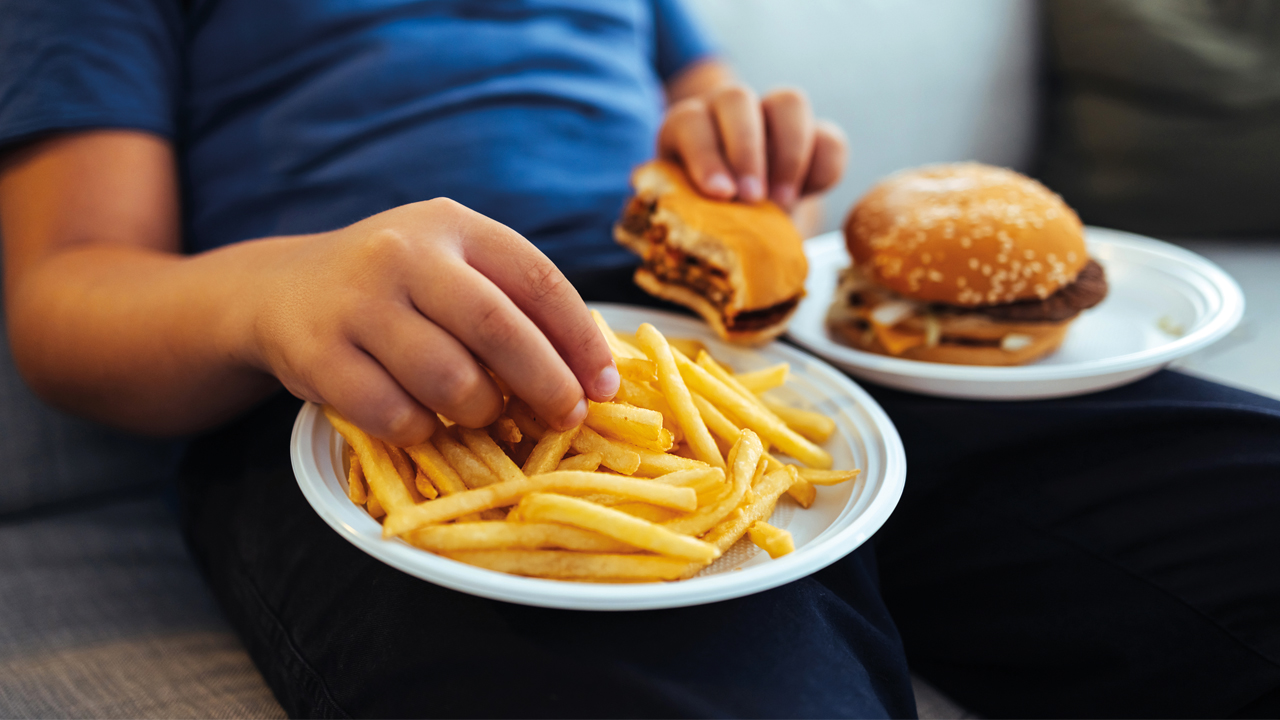In OTC
Follow this topic
Bookmark
Record learning outcomes
We know that most children hold sweets and ‘junk food’ as their holy grail. It may be the whimsical wrappings or the brightly coloured swirls of the candy that create the initial desire, but it is the rush of dopamine brought on by the perfect combination of sugar, fat, salt and artificial flavourings that are likely to seal the deal on a child’s infatuation with the sweet. It is normal for children and young people to enjoy this type of food, but the bulk of their diet should of be made up of nutritional food, which is readily available for their parents or caregivers to purchase, without them having to spend time dissecting the nutrition labels on packaging. This, however, is becoming increasingly difficult for the average person to do, which leads to bad food disguised as good food landing in shopping carts far too often.
Obesity rates in children and teens in the UK are rising, with the largest and fastest prevalence in 11- to 15-year-olds. Rates of obesity in boys in particular is rising, from 27.5 per cent in 1995 to 42 per cent in 2019. Without intervention, this could lead to children of today developing more serious health conditions down the line, damaging their quality of life, ability to contribute to society and the economy, and increased pressure on health services.
What is obesity?
A complex health condition, the World Health Organization describes obesity as “a chronic complex disease defined by excessive fat deposits that can impair health”. It is usually measured by the body mass index (BMI) which is one’s weight in kilograms divided by the square of their height in meters. A BMI of 30 is considered obese, with anything over 40 considered as severely obese. Obesity may lead to other serious health conditions down the line, including type 2 diabetes, high blood pressure, osteoarthritis, liver and kidney disease, cancer (especially bowel, breast and womb cancer), depression, reduced fertility and pregnancy complications and high cholesterol, to name a few. Obesity costs the NHS around £6.5 billion per year and is the second biggest preventable cause of cancer. “In the UK it is estimated that around one in every four adults and around one in every five children aged 10-11 are living with obesity,” said the Department of Health and Social Care (DHSC). That’s approximately 26 per cent of adults and 23.4 per cent of children aged 10-11 years, but how did we get here?
Our broken food environment
Alfred Slade, Government affairs lead at Obesity Health Alliance, credits the rising levels of obesity (nationwide and worldwide) to “our broken food environment”. “Unhealthy food is heavily marketed, cheaper calorie-for-calorie than healthy food and is also so available that it is almost unavoidable.” This is not helped by the fact that while the Government has made many attempts to curb the rates of obesity over the last few decades, few plans have made a substantial impact. Alfred elaborated: “Obesity rates have risen dramatically from the late 1970s onward, finally triggering the Government to act in 1991 with its first ever strategy to reduce obesity rates. Since then, we have had 14 such strategies containing nearly 700 recommendations, but obesity rates have continued to rise. This is because of those 700 recommendations, almost none were ever implemented in the face of lobbying by food industry giants and ideological opposition from politicians.”
Children fall prey to the onslaught of junk food advertising that can be seen from a tube, a car, a pavement or the couch – as Alfred put it: “There is a flood of junk food advertising everywhere we turn.” This has been especially problematic for boys, emerging research shows. Alfred proposed that one of the reasons why rising obesity rates are higher in boys is because they see more advertising for junk food and eat and/or drink more unhealthy products, research suggests. “We know that more boys than girls are involved in physical activity, and the way that many unhealthy products are sold to them as rewards for physical activity (or even being a booster to physical activity) is appalling.” The ultimate solution to curbing rising obesity rates, Alfred suggests, is through “population-wide measures by the Government to regulate the food industry and fix our broken food environment, to ensure that the healthy choice is the only choice”. However, there are things that pharmacy teams can do in the meantime to help families combat childhood obesity.
“Unhealthy food is heavily marketed, cheaper calorie-for-calorie than healthy food”
A way out?
It may be up to parents and caregivers – and pharmacy teams – to educate themselves and their children on what foods make up a healthy diet and encourage young people to get exercising. The NHS provides some ideas for healthy snack swaps. Instead of crisps, muffins, biscuits and chocolate, encourage customers to try:
- Chopped vegetables with lower-fat hummus
- Plain popcorn or rice cakes
- Lower-sugar yoghurts or lower-sugar rice pudding
- A slice of malt load or fruited teacake
- Fresh or tinned fruit (in juice, not syrup) or fruit salad
- Crackers with lower-fat cheese
- Unsalted mixed nuts.

Exercise should be fun and exciting for children, so encourage activities that incorporate movement with enjoyment.
Customers can also sign up to NHS ‘Healthy Steps’ emails to set simple goals for the whole family to try cut down on sugar, enjoy cooking together and move more. “Physical activity has many wonderful benefits, especially for mental health and musculoskeletal conditions,” says Alfred. The Government suggests that children aged five to 18 get an average of at least 60 minutes of moderate to vigorous physical activity per day, across the week. This can look like climbing, dancing, skipping, playing sport or working out, skating or playing – any activity that makes one “breathe faster and feel warmer”. If parents or caregivers are finding it difficult to get their children to exercise, pharmacy teams can make the following suggestions:
- Use exercise as transportation; walk or cycle to a destination instead of driving
- Focus on fun; have a dance party, pack in lots of walking trips to the aquarium, or play miniature golf
- Include kids in tasks like washing the dog, washing the car or gardening
- Make a competition out of it. Children are often more motivated if there is something to be won, so see who can run faster, do more jumping jacks or how far they can throw.
Whatever the activity, anything is better than being sedentary. Remind customers that exercise is an important aspect of health, filtering into cognitive abilities and improving physical and mental wellbeing. When it comes to combatting obesity, however, diet is still key, says Alfred: “The old saying is true – you can’t outrun a bad diet.”
“Around one in every five children aged 10-11 are living with obesity”
Young people’s mental health
Although we live in a society where the stigma surrounding mental health issues is less severe than it was 20 years ago, mental health rates are still worsening for children and teens in the UK. David Crepaz-Keay, head of research and applied learning at the Mental Health Foundation (MHF), commented on the current state of affairs: “It’s clear that there is a growing challenge with children and young people’s mental health. The pandemic has had a lasting impact which disrupted education, social connections and made the difficult ‘growing up’ years even more difficult.”
Difficult economic circumstances have also increased the number of children living in poverty and other social determinants, which are closely correlated with increased prevalence and severity of poor mental health. Social media is an added complexity which is causing significant distress for some young people.” Mind, a mental health charity in England and Wales, recently worked with a research partner and spoke to over 500 young people to gauge their experiences with mental health and the support available to them. The report found multiple reasons why mental health is suffering, including that young people:
- Report being judged the most in the early stages of looking for or applying for suitable support. They experience much less judgement when receiving support
- Belittle their own experiences and needs – 23 per cent of young people who had experienced trauma said that they didn’t feel that their problems were serious enough to reach out to mental health support
- Struggle to find privacy in tight-knit rural communities
- Young men find it particularly difficult to open up about their mental health – 37 per cent of young women over 16 who have received mental health support have received this from a friend, but only 15 per cent of young men over 16 state they have done the same
- Social or cultural stigma around mental health is often passed down through generations.
It is clear that mental health needs to be paid more attention to by Government, schools, employers and communities, with a “focus on reducing social inequality and prevention in mental health,” David notes. At a grassroots level, however, pharmacies can make a tangible difference. Pharmacy teams should “[make] sure they are able to listen constructively without being too quick to judge” and can signpost customers to valuable resources.
Signposting
For further support, encourage customers to visit:
- The Mental Health Foundation, for a range of supportive materials: mentalhealth.org.uk
- The Small Talk, Big Change podcast, which explores critical issues impacting the mental health and wellbeing of children, young people and their families, including neurodiversity: mentalhealth.org.uk/our-work/programmes/small-talk/small-talk-big-change-podcast
- Every Mind Matters by the NHS for reliable information across a range of mental health topics: nhs.uk/every-mind-matters/
- Young Minds – mental health support for customers and training resources the pharmacy team can complete: youngminds.org.uk.

Having a list of mental health helplines up in the pharmacy may be a small but significant way to help those in need.
Chickenpox
Chickenpox is known mainly for two things; it’s distinct red, spotty rash and for being extremely contagious. Common in children, chickenpox is usually accompanied by several symptoms and occurs in three stages: spots appear; spots become blisters; and finally the blistering spots become scabs.
“Chickenpox, caused by the varicella-zoster virus, presents with a characteristic set of symptoms. Pharmacy teams should be aware of these to provide appropriate guidance and care,” says Farzana Haq, senior IP clinical pharmacist and locum. Here are the symptoms Farzana says to look out for:
- Rash: the distinctive symptom is a red, itchy rash that progresses to fluid-filled blisters (vesicles) and then scabs over. The rash often starts on the face, back and chest before spreading
- Fever: often the first symptom, fever can range from mild to high. This can occur one to two days before the rash appears
- Fatigue
- Loss of appetite
- Headache
- Muscle aches.
Some symptoms may differ depending on one’s age:
- Infants and toddlers might exhibit more irritability and crying
- Adolescents and adults’ symptoms tend to be more severe, including a higher likelihood of complications like pneumonia, secondary bacterial infections, and a more extensive rash
- Pregnant women are at a higher risk for severe disease, complications like pneumonia, and risks to the foetus (e.g., congenital varicella syndrome).
“While chickenpox is generally self-limiting, there are OTC treatments that pharmacy teams can recommend to alleviate symptoms and minimise discomfort,” says Farzana. For the itching and rash, Farzana recommends suggesting calamine lotion, antihistamines (remember to double check what can be given to children), soothing oatmeal baths and antipruritic cream. Paracetamol (acetaminophen) can be recommended to help with fever and pain, while “ibuprofen should be avoided in children and adults, as well as other NSAIDS, as this is associated with an increased risk in infection.
“Infected individuals should be isolated until all blisters have crusted over, usually about five to seven days after the rash appears,” Farzana notes. “Children should be kept away from school or nursery until no more crops appear and all spots have crusted over as at this point, they are no longer contagious. Regular hand washing and using separate towels and bedding can help prevent spreading the virus to others.” Farzana also recommends customers with chickenpox wear loose-fitting clothing, apply cool, wet compresses to the skin and avoid scratching – “keep nails trimmed and consider using mittens or socks on hands for young children to prevent scratching and potential secondary infections”. Plenty of fluids and adequate rest is also crucial for recovery.

Chickenpox usually gets better on its own, but customers may visit the pharmacy for help to ease symptoms such as pain and itchiness.

